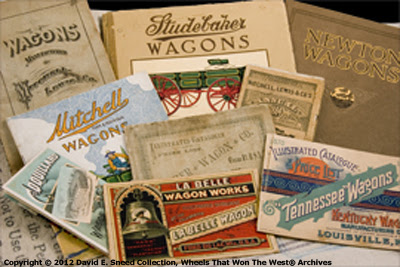Each year, we receive quite a few queries related to how a particular wagon manufacturer painted and striped their vehicles. They’re great questions but, ones that usually need to be tempered with additional details acquired from primary source materials. After all, early wagon builders were very similar to modern car and truck makers in that they often changed their production methods and designs. In fact, I know of several major makers that produced multiple catalogs in a single year just to help show the changes.
Clearly, it's easy to get bogged down in what might seem like the most basic details. To get a more concrete understanding of just how a specific wagon brand was adorned with color, we need to go well beyond what we can be gleaned from a single catalog reprint or limited viewing of a few surviving vehicles. Ultimately, it takes a good cross-section of primary source materials (including early catalogs, broadsides, advertisements and period photos) throughout the entire life of a brand to help confirm just how, what, when and why a maker did certain things.
Leaning on details from just one source can only be effective if it can be documented that the vehicle is from the same timeframe as the literature. A good example of the challenges to this question can be seen within the legendary Studebaker Bros. Manufacturing Company. In their seven decades of building horse-drawn vehicles, they transitioned through a number of different paint designs and striping styles for their wagons; even subtle changes in wagon types could be just enough to change the striping treatment. Acquiring enough materials to provide an authoritative conclusion for every brand and circumstance can be tough. It’s yet another reason why it's important to help preserve original paint on as many vintage vehicles as possible. Without that commitment, the further we travel from the 19th and 20th centuries, the more difficult it becomes for us and future generations to properly understand America’s wood-wheeled heritage.

